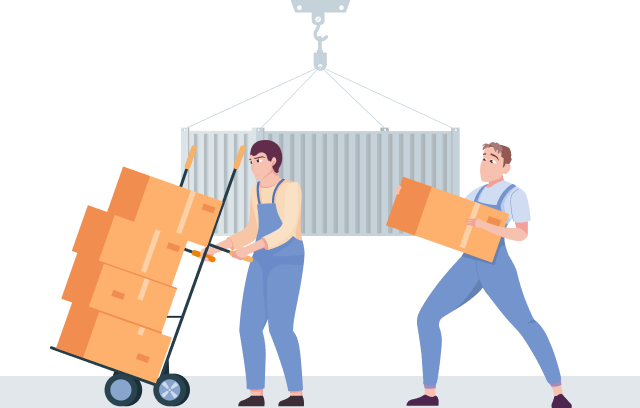
Published on 06/23/2024
Published on 06/23/2024
Loading a trailer can be an intimidating task, particularly for those who are new to towing. However, with proper preparation, safety precautions, and following the steps outlined in this guide, you can load a trailer easily and confidently. Ensuring a safe and successful loading involves considering the trailer’s weight, the items you’re loading, and the vehicle’s towing capacity. Inspect the trailer, including the brakes and tires, before loading. Secure and balance all items to prevent shifting during transit. Double-checking hitch connections before departure ensures safety and success.
When selecting a trailer, look for one with a ramp. A ramp is especially useful for loading items into the trailer, as it provides a much easier way to get items into the trailer than lifting them up and over the sides. Additionally, the ramp can easily move items out of the trailer when you reach your destination. Using a ramp helps prevent potential injuries from lifting large, heavy items, making it an essential feature for those who need to move items frequently.
Before loading a trailer, ensure it is properly secured. Inspect the hubs, axle, and coupler to confirm the trailer is firmly attached to the vehicle. Ensure the trailer is balanced, the hitch aligns with the towing vehicle, and the safety chains are tight. Attach all safety chains securely and remove any slack to prevent the trailer from detaching during sudden stops. Properly load the trailer to avoid overloading or imbalances, as these can lead to dangerous driving conditions. Check the brakes, lights, signals, and other safety features to ensure the trailer is safe to tow.
Before loading, check that the trailer is level. A level trailer simplifies the loading process and helps prevent potential damage to the trailer or the items. Ensuring the trailer is level also keeps the items securely stored and prevents them from shifting during transport. Additionally, it helps maintain the trailer and the items’ safety.
Using cargo straps is essential to secure items and prevent them from moving during transit. They protect items from potential damage and provide an extra layer of security. By using cargo straps, you can ensure your items remain safe and secure during transport.
When loading heavy items, such as furniture or machinery, use a winch for safety. A winch is a mechanical device that uses a cable or rope to pull or lift a load. It reduces the risk of injury and helps secure the load properly. Using a winch also speeds up the loading process, making it easier to move heavy items.
Pay attention to how the load is distributed in the trailer. An unbalanced load can lead to unsafe driving conditions. Ensure the weight of the load is evenly distributed across the trailer to maintain stability and security while driving.
Before driving, ensure the trailer is balanced correctly. This stabilizes the trailer during movement and helps avoid accidents. Properly balancing the trailer reduces the risk of accidents, increases fuel efficiency, and improves overall performance.
Wheel chocks are essential for keeping the trailer in place while loading. Placed in front of the trailer’s wheels, they prevent the it from shifting or rolling away, providing stability and safety during the loading process.
Loading ramps are useful for placing items onto the trailer, providing a smoother and more stable surface. Made from durable materials like steel or aluminum, they can bear significant weight. Ramps can be set up at various angles, making it easier to load items that may not fit on a flat surface.
When loading items onto a trailer in bad weather, take extra precautions. Secure the trailer and items properly, ensuring all latches and locks are firm. Use appropriate straps or ropes to fasten items. Check the trailer’s tire pressure and ensure the lights are working. These steps ensure safe transport in adverse weather conditions.
Though overall process of loading can seem overwhelming, proper preparation and safety measures make it manageable. Ensuring the trailer’s connection and condition, using JFKMoving.com for efficient loading, and following safety practices ensure a smooth process. Always use proper lifting techniques, distribute the load evenly, and secure items well. These practices guarantee safe and efficient trailer loading.
 Top 10 Challenges During a Move and How to Overcome Them
Top 10 Challenges During a Move and How to Overcome Them
Discover top moving challenges and learn practical tips to overcome moving obstacles. Moving tips and solutions for a stress-free move.
Read more The State of the Moving Industry: Trends and Predictions for 2024
The State of the Moving Industry: Trends and Predictions for 2024
Stay ahead of the curve in the moving industry, find out about the latest trends, emerging technologies, and predictions for moving in 2024.
Read more How Moving Habits Have Changed Post-Pandemic
How Moving Habits Have Changed Post-Pandemic
Explore how moving habits have changed post-pandemic, with insights on moving trends after COVID-19. Discover the shifts in moving post-pandemic as remote work and lifestyle choices reshape the industry.
Read more